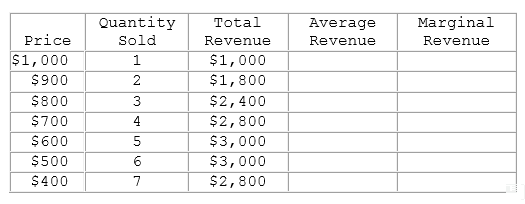When you borrow money from a bank, your bank charges you interest on the loan to compensate for all of the following except
A) inflation.
B) liquidity risk.
C) the risk of default.
D) the opportunity cost of other uses for the loaned money.
B
You might also like to view...
If the money supply grows 7% during the year, and people expected the money supply to grow by 5%, what happens to the short-run aggregate supply curve, according to the misperceptions theory?
A) It shifts down. B) It shifts up. C) It doesn't shift. D) It shifts down unless Ricardian equivalence holds, in which case it doesn't shift.
Using the information in the table shown, if you were to graph the first two columns, you would have graphed which curve?
This table represents the revenues faced by a monopolist.

A. Marginal revenue
B. Market supply
C. Market demand
D. Total productivity
Considering perfect competition, monopolistic competition, and monopoly, which of the market structures can have positive profits in the short run?
Income elasticity of demand for a good has been calculated as - 4.0, therefore the good is:
(a) A substitute good. (b) A necessity. (c) A complementary good. (d) An inferior good.